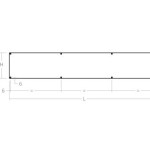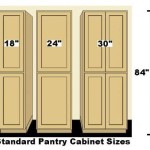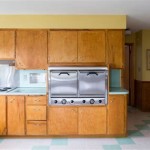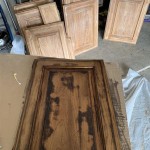How to Paint Kitchen Cabinets Distressed Cream Walls
Transforming a kitchen with a fresh coat of paint can be a rewarding project. The combination of painted cabinets and distressed cream walls offers a classic and timeless aesthetic. This article provides a comprehensive guide on how to achieve this look, covering everything from preparation to finishing touches.
Preparation is Key
Before diving into painting, thorough preparation is paramount for a successful outcome. This involves cleaning, sanding, and masking to ensure a smooth and even application of paint.
1.
Clean the Cabinets:
Begin by cleaning the cabinets thoroughly with a degreaser to remove any grease, grime, or residue. This will ensure proper adhesion of the paint.2.
Sand the Surfaces:
Once clean, lightly sand the cabinet surfaces with fine-grit sandpaper to create a smooth, even surface. This will help the paint adhere better and create a professional finish.3.
Mask Off Areas:
Protect surrounding areas from paint splatters by masking off countertops, backsplashes, and walls with painter's tape. Cover floors with drop cloths or plastic sheeting.Painting the Cabinets
With the cabinets prepped, focus on the painting process. Using the right techniques and materials will contribute to a high-quality finish.
1.
Choose the Right Paint:
Opt for a paint specifically designed for cabinets, as it is more durable and resistant to wear and tear. Consider a semi-gloss or satin finish for a slightly sheen look that is easy to clean.2.
Prime the Cabinets:
Apply a primer to the cabinets, ensuring it is compatible with the chosen paint. Priming provides a smooth and uniform base for the paint, promoting better adhesion and a more even finish.3.
Apply Paint in Thin Coats:
Paint the cabinets in thin, even coats, allowing each coat to dry thoroughly before applying the next. This will prevent drips and runs, ensuring a professional and smooth finish.Distressing the Cream Walls
Distressing is a technique that creates a vintage, worn look on walls. This process involves applying paint and then strategically removing some of it to reveal the underlying layers.
1.
Choose a Cream Paint:
Select a light cream paint that complements the color of the cabinets. Consider a slightly textured paint for a more authentic distressed look.2.
Apply the Cream Paint:
Paint the walls with the chosen cream paint, allowing it to dry completely.3.
Distress the Walls:
Once the cream paint is dry, use a sanding block or sandpaper to gently rub away some of the paint in areas where wear and tear would naturally occur. This could include corners, edges, and around door frames.4.
Apply a Wax Finish (Optional):
For added protection and a more polished distressed look, apply a clear wax to the walls after distressing. This will seal the paint and create a subtle sheen.Finishing Touches
After the cabinets and walls are painted and distressed, add the final touches to complete the design.
1.
Hardware:
Replace cabinet hardware with new knobs or pulls that complement the overall style. Consider brushed nickel, oil-rubbed bronze, or antique brass finishes for a vintage feel.2.
Accessorize:
Enhance the kitchen's aesthetic with accessories that reflect the distressed cream and painted cabinet scheme. This could involve adding farmhouse-style decor, rustic lighting, or floral arrangements in complementary colors.
How To Paint Kitchen Cabinets Without Sanding Or Priming

The Best Way To Paint Kitchen Cabinets No Sanding Palette Muse

How To Update Cream Or Off White Cabinets Trim Common Questions Kylie M Interiors

Distress Dark Wax Kitchen Cabinets Image Search Results Distressed Painting

How To Paint Your Kitchen Cabinets The Prairie Homestead

Distressed Kitchen Cabinets In An Old Look New

The 16 Best Wall Colors To Update Cream Cabinets Trim Kylie M Interiors

Rescuing And Reviving A Glazed Distressed Kitchen Bella Tucker

The 16 Best Wall Colors To Update Cream Cabinets Trim Kylie M Interiors

24 Dreamy Examples Of Cream Kitchen Cabinets
Related Posts








